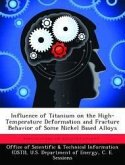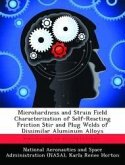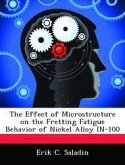With the upper temperature limit of the Ni-based superalloys attained, a new class of materials is required. Intermetallics appear as likely candidates because of their attractive physical properties. With a relatively low density, high thermal conductivity, excellent oxidation resistance, high melting point, and simple crystal structure, nickel aluminide (NiAl) appears to be a potential candidate. However, NiAl is limited in structural applications due to its low room temperature fracture toughness and poor elevated temperature strength. One approach to improving these properties has been through the application of eutectic composites. Researchers have shown that containerless directional solidification of NiAl-based eutectic alloys can provide improvement in both the creep strength and fracture toughness. Although these systems have shown improvements in the mechanical properties, the presence of refractory metals increases the density significantly in some alloys. Lower density systems, such as the carbides, nitrides, and borides, may provide NiAl-based eutectic structure. With little or no information available on these systems, experimental investigation is required. The objective of this research was to locate and develop NiAl-carbide eutectic alloys. Exploratory arc-melts were performed in NiAl-refractory metal-C systems. Refractory metal systems investigated included Co, Cr, Fe, Hf, Mo, Nb, Ta, Ti, W, and Zr. Systems containing carbides with excellent stability (i.e.,HfC, NbC, TaC, TiC, and ZrC) produced large blocky cubic carbides in an NiAl matrix. The carbides appeared to have formed in the liquid state and were randomly distributed throughout the polycrystalline NiAl. The Co, Cr, Fe, Mo, and W systems contained NiAl dendrites with a two-phase interdendritic microconstituent present. Of these systems, the NiAl-Mo-C system had the most promising microstructure for in-situ composites.








